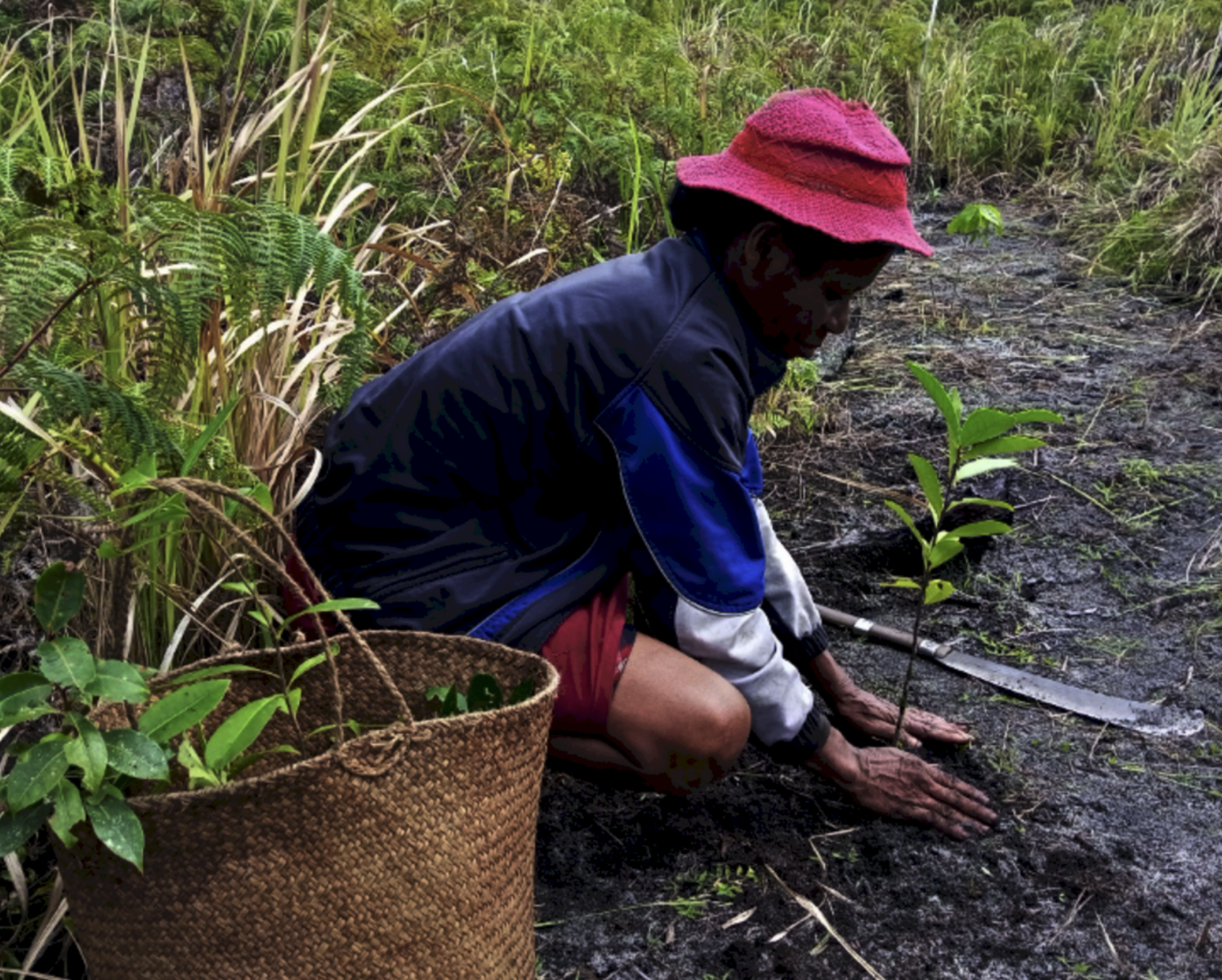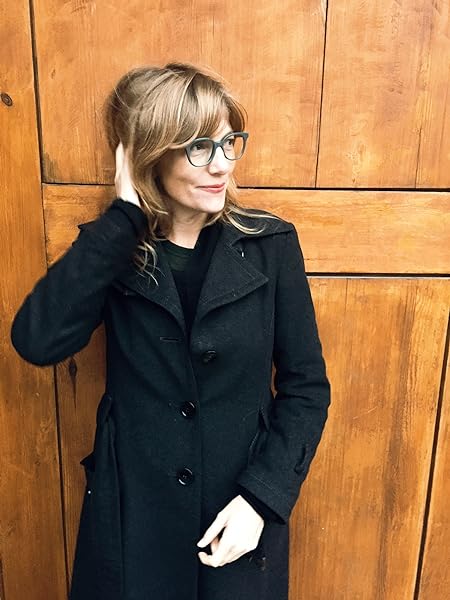Sipping a beer, electronic musician Hannes Teichmann looked around the darkened Apollo Hall, a soaring, gilded room in Berlin’s regal Staatsoper, or State Opera. Beneath enormous drop crystal chandeliers, 30-somethings in crop-tops, spangled disco shirts and gold-rimmed eyeglasses milled around, or conferred on bean bags inside a large, semi-transparent tent. Teichmann, a longtime fixture of Berlin’s underground techno scene, smiled. “For me, it’s like a club,” he said.
Certainly, the evening — part of a series called “Sustainable Listening” — was a departure from the Staatsoper’s regular program. Instead of chamber music or introductions to new opera performances, tonight the Apollo Hall hosted a political scientist’s talk about consumerism, capitalism and how we as a society must re-conceive work (among other things, we should do less of it, so we have more time for socializing, hobbies, volunteer work and politics, and feel less of a need for “retail therapy”), if we are going to stop harming the environment.
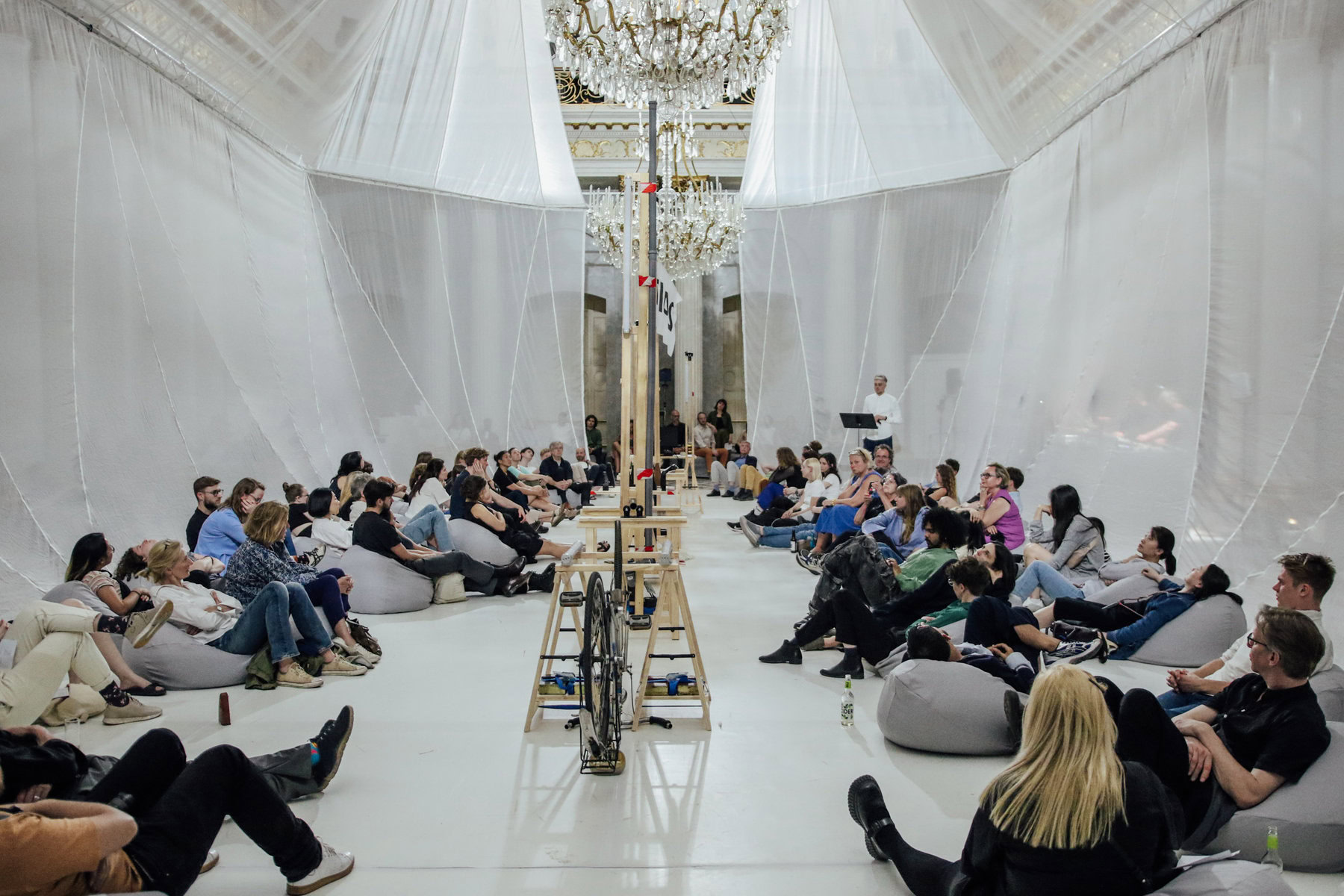
To help the message sink in, not just intellectually but emotionally, members of the house orchestra stepped in. Between ideas about unpaid household labor, the impact of AI, and “bullshit jobs,” they played throbbing drums, melancholy string instruments, and even a typewriter. Hannes and his brother Andi, known collectively as the “Gebrueder Teichmann” (or Teichmann brothers), sampled the sounds in real time, creating live electronic grooves.
For audience member Dina Rossbach, a psychologist, the mixture of music and message worked well. “Certain sentences from the lecture, with the music — they’re echoing, in a different way, for me,” she said. “It was poetic,” agreed her friend Michaela Aue, host of a meditation podcast.
In its second season, the Berlin Staatsoper’s “Sustainable Listening” series is just one of hundreds of projects launched by members of Germany’s Orchestra of Change, a grassroots, classical musician-led initiative whose goal is to use the emotional power of music in creative ways to protect nature and the climate. And, the musicians emphasize, we might just find that living more sustainably can be beautiful, fulfilling and fun.
Founded in 2020, the Orchestra of Change collective has grown quickly in a country that, with 129 publicly funded concert, opera, radio and chamber orchestras, is home to a full quarter of the world’s professional orchestras. Currently, 40 state orchestras are members, and individual projects range from supporting rainforests in the tropics to recycling stage sets at home; donning yellow rain boots and playing cellos on Germany’s spectacular intertidal mudflats; and bringing “climate-neutral” chocolate bars to Germany via sailing ship and bicycle to sell during intermissions.
“Musicians can use their creativity, and come up with new formats, to help the climate,” said Mannheim-based viola player Detlef Grooss, one of the group’s co-founders. In a country with nearly 10,000 permanently employed classical musicians, he added, “I think it’s good, if we don’t just act like music-playing employees.”
As Grooss explains it, the Orchestra of Change came about as a response to a dilemma: We all know that human behavior is damaging the environment, but we don’t do much about it. “All the facts are clear,” he said. “But we don’t act. We are like the smoker with the amputated leg, saying, ‘Give me another cigarette.’”
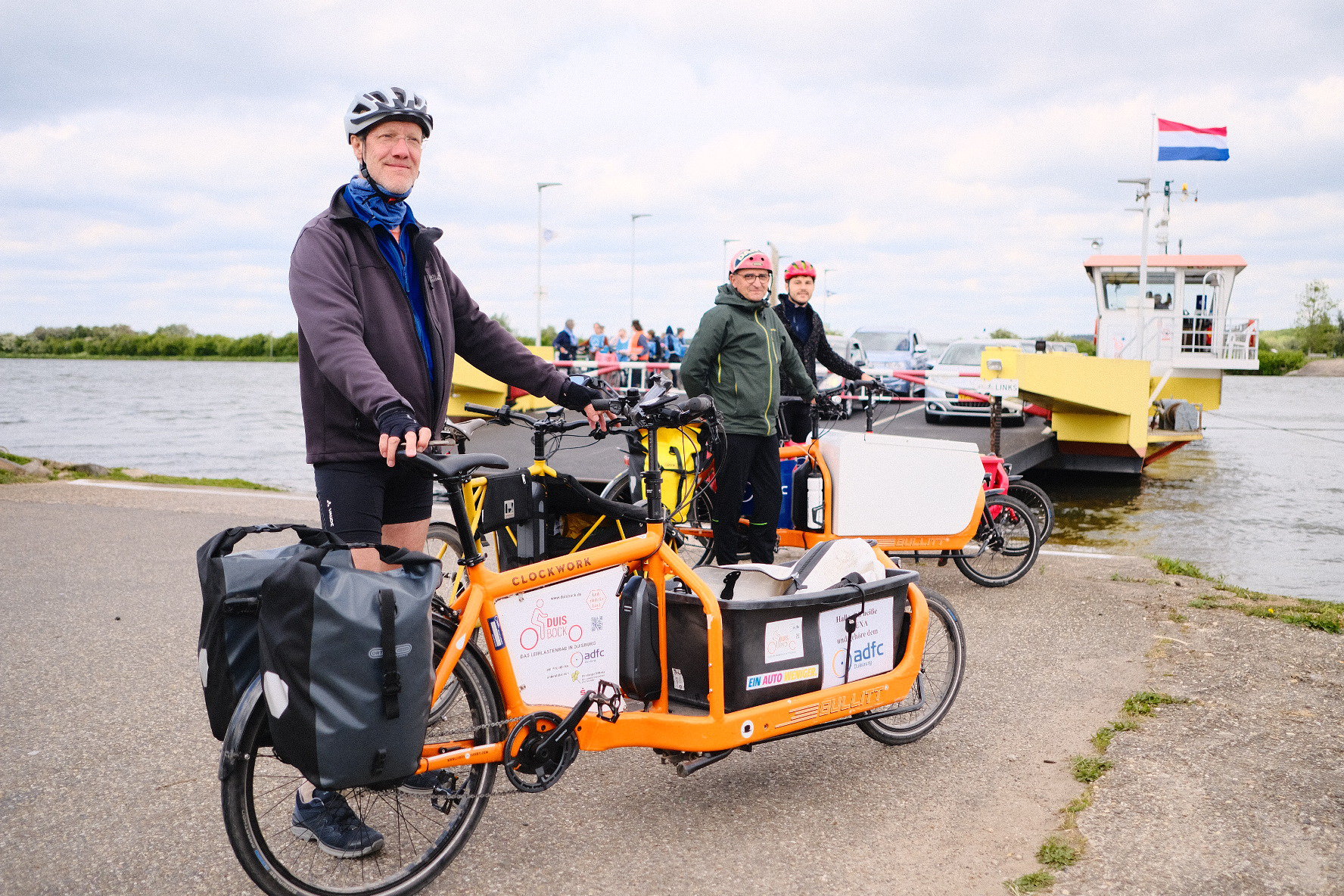
Talking to his brother, a climate researcher, Grooss came across the idea that, while people may understand the problem intellectually, we fail to process it emotionally. Maybe, he thought, music could help. “Scientists reach brains,” he said. “But artists touch the heart.”
“As musicians,” he added, “What we can do best is communicate using emotion.”
Berlin-based French horn player Markus Bruggaier, another co-founder, was thinking along the same lines. Some 15 years ago, a Berlin instrument maker alerted him to the fact that, due to the destruction of the rainforests, the tropical hardwoods needed to build things like violin bows were in imminent danger of total extinction. “When we heard about this topic, we understood how extreme the situation is,” said Bruggaier, a member of the Staatsoper’s house orchestra, the Staatskapelle Berlin. “Bow making could die out.”
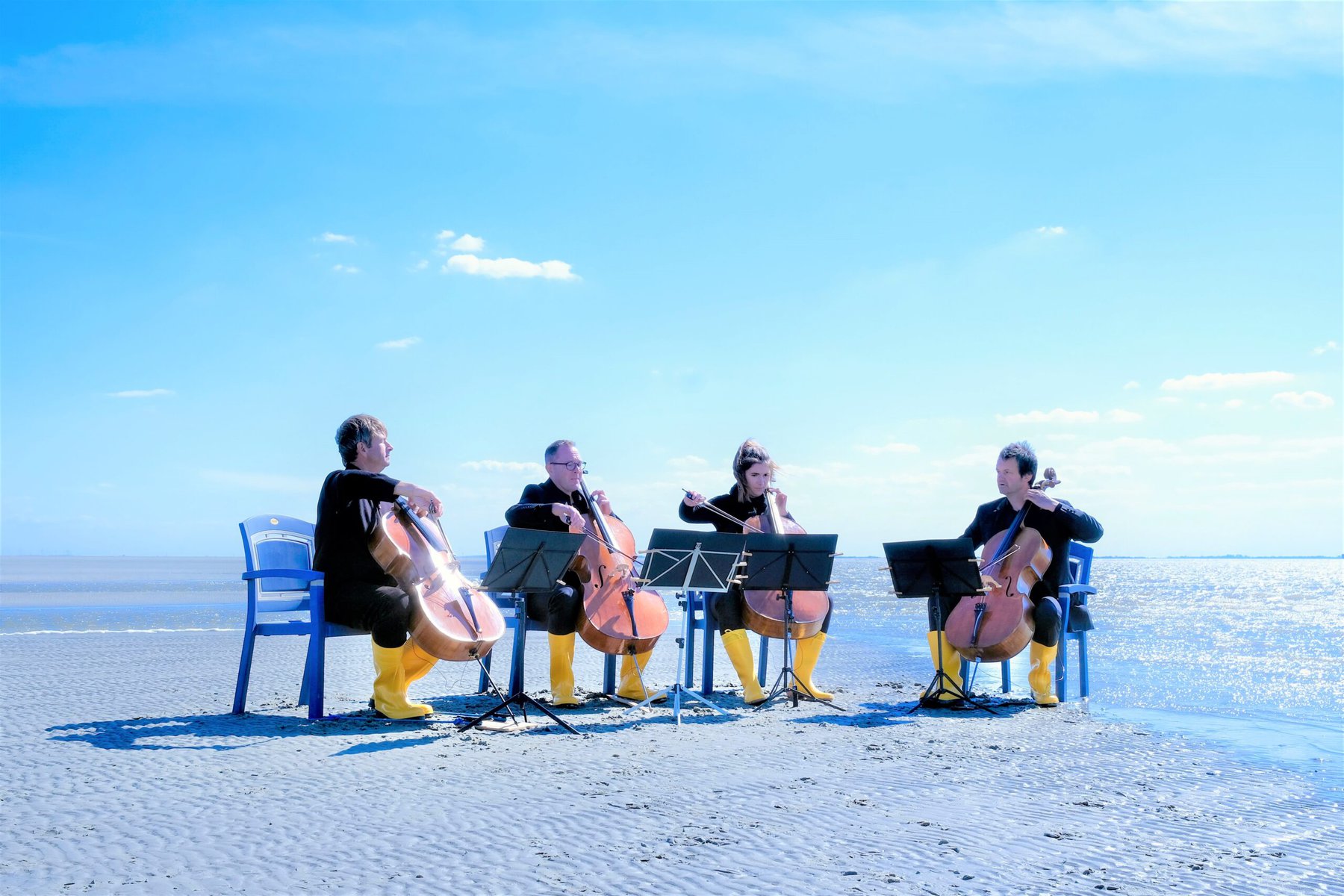
Bruggaier co-founded an initiative to raise awareness of the problem and teamed up with the Zurich Zoo to support a reforestation project in Madagascar, where the black ebony wood needed for the “frog” of the bow is grown. “We started to do something, to just go for it,” he said.
He and his colleagues from the Staatskapelle raised money for the reforestation project, started looking at ways to reduce their own orchestra’s carbon footprint, and began hosting an annual Climate Concert in an old industrial power plant in central Berlin. But he wanted to do more.
Weighed down by negative news?
Our smart, bright, weekly newsletter is the uplift you’ve been looking for.“I had the feeling we didn’t use the environmental theme in classical music enough,” he said. “People said, ‘It’s just love and death.’ But I don’t agree, I think there’s a lot of inspiration from nature there.”
He started reaching out to colleagues across Germany. Joined by a horn player from Duisburg, a horn player from Luebeck, and a cellist from Braunschweig, Bruggaier and Grooss officially launched the Orchestra of Change just as the pandemic hit. “As musicians, we couldn’t play,” said Grooss. “So we had a lot of time for this.”
One of the first projects the Orchestra of Change undertook was a continuation of the reforestation project in Madagascar. The goal, they stress, is not to plant trees in order to provide wood for future musical instruments. Rather, they want to help heal the damaged rainforest and preserve biodiversity, while underscoring how interconnected our world is. To that end, this year, they started a new project to support the people, particularly women, living by the Madagascar forest. Inspired in part by Grooss’s wife, who works in international development, this aspect of the project funds training courses where local women can learn how to grow vegetables, as well as skills like weaving, sewing, seaweed cultivation and livestock farming. With the extra money they earn, the women can help support their families and have more say in household decisions. The project also focuses on improving medical care, particularly for women. “We realized, we can’t save the rainforest if the people living there can’t live reasonable lives,” said Bruggaier.
The collective is also launching similar projects in Brazil, where the reddish pernambuco wood that makes up a large part of a violin bow grows.
The Orchestra of Change has also developed innovative projects here in Germany. At the National Theater Mannheim, Grooss and his colleagues built a life-sized model of an average three-room apartment in their theater’s lobby. The model showed exactly how much energy people use, or could save, in each part of their home — from streaming TV shows to recycling and turning out the lights. Other projects include holding introductory talks to a new performance on a moving tram car, in order to encourage people not to use their cars to reach the concert; or using drums, horns and photography to celebrate the beauty of a last-of-its-kind spot near Munich where the River Isar still runs along its original, natural course; or performing Hadyn in a field of cows, to underscore the importance of organic farming.
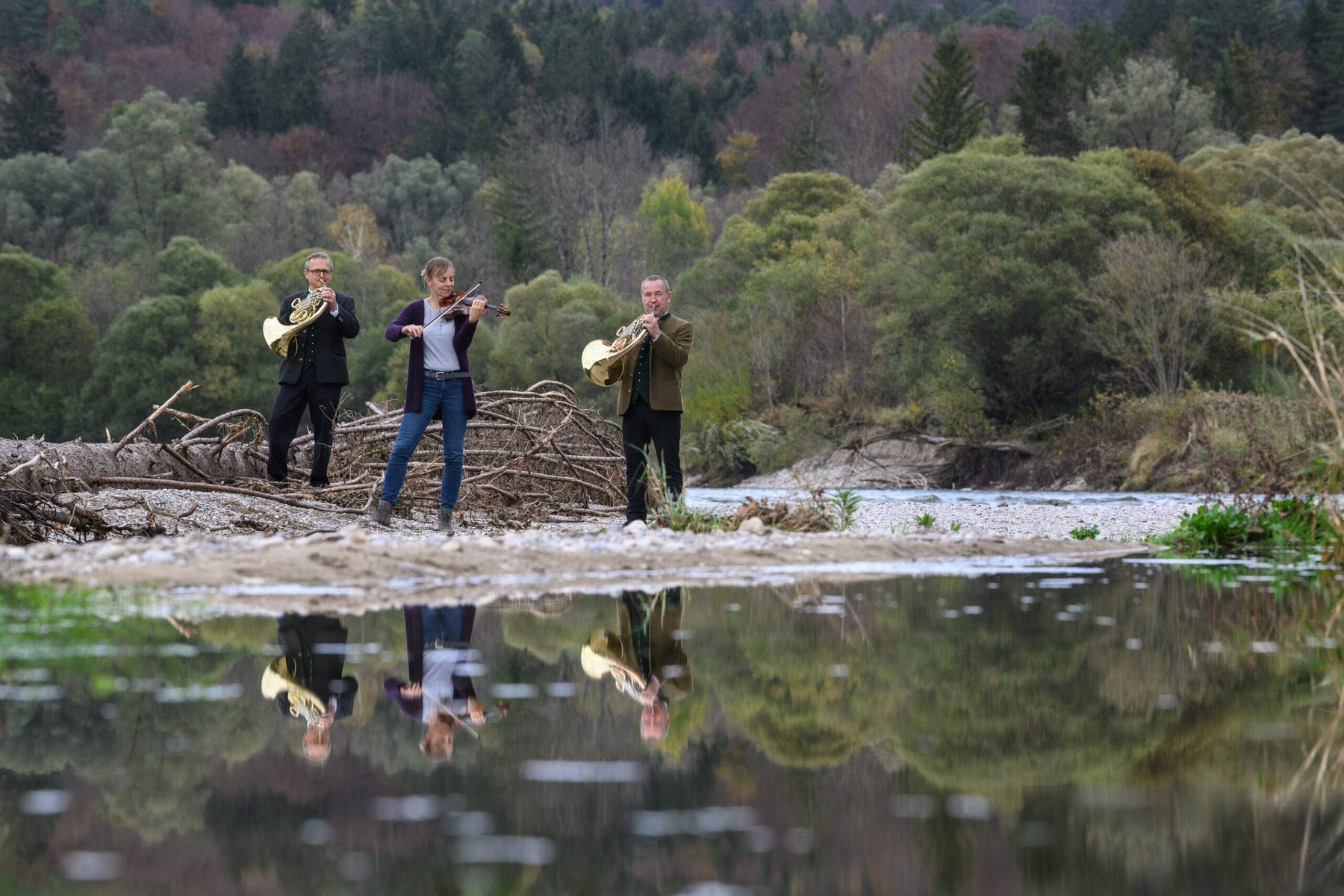
Coming up with new ideas and sharing them is part of the mission, said Grooss: “If someone has a good idea for a new concert format, anyone can use it.”
That also goes for gathering and sharing information about how to reduce orchestras’ carbon footprints, say, by traveling more often by train or reusing materials in stage sets. “Sustainability in culture is big in Germany right now,” said Grooss, who took advantage of his theater’s recent closure for renovation to obtain a management degree in cultural sustainability. “We’re a point of contact for people who want to learn more.”
The Orchestra of Change also partners with major German climate science centers. “They call us and say, ‘We want to do this concert about the rise of the sea level,’” said Meike Lohkamp, press speaker for the Helmholtz Climate Initiative. “We check to see who is researching the change in sea level, and connect them.”
For Helmholtz scientist Friedrich Bohn, who works with simulated models of forests, the experience of teaming up with musicians from the Orchestra of Change was inspiring. Combining his facts and figures — how many acres of forest are lost each day, how many people die trying to save them — with a violin duet left the audience gutted. After the intermission, his talk about how reforestation is still possible was coupled with a tango — and people left feeling hopeful.
“Normally, if you do a talk with the public about scenarios, it’s very dry, you put people to sleep with a lot of statistics,” he said. “But with this, you could see the audience had combined the message in their hearts and minds. I was really touched by this evening, because it brings together two aspects of our life — the rational and the emotional.”
“It’s not like seeing The Magic Flute performed for the 50th time,” agreed Grooss. “That’s also great. But these are very special moments, special connections. They can change your outlook on the world.”





